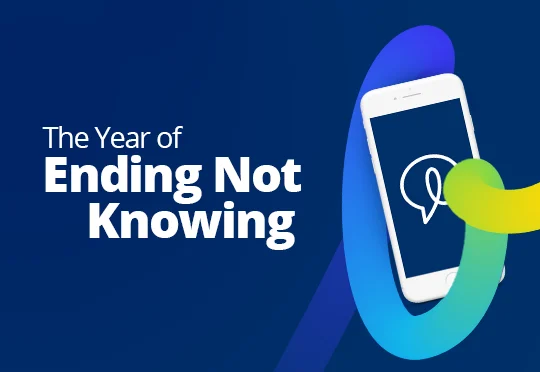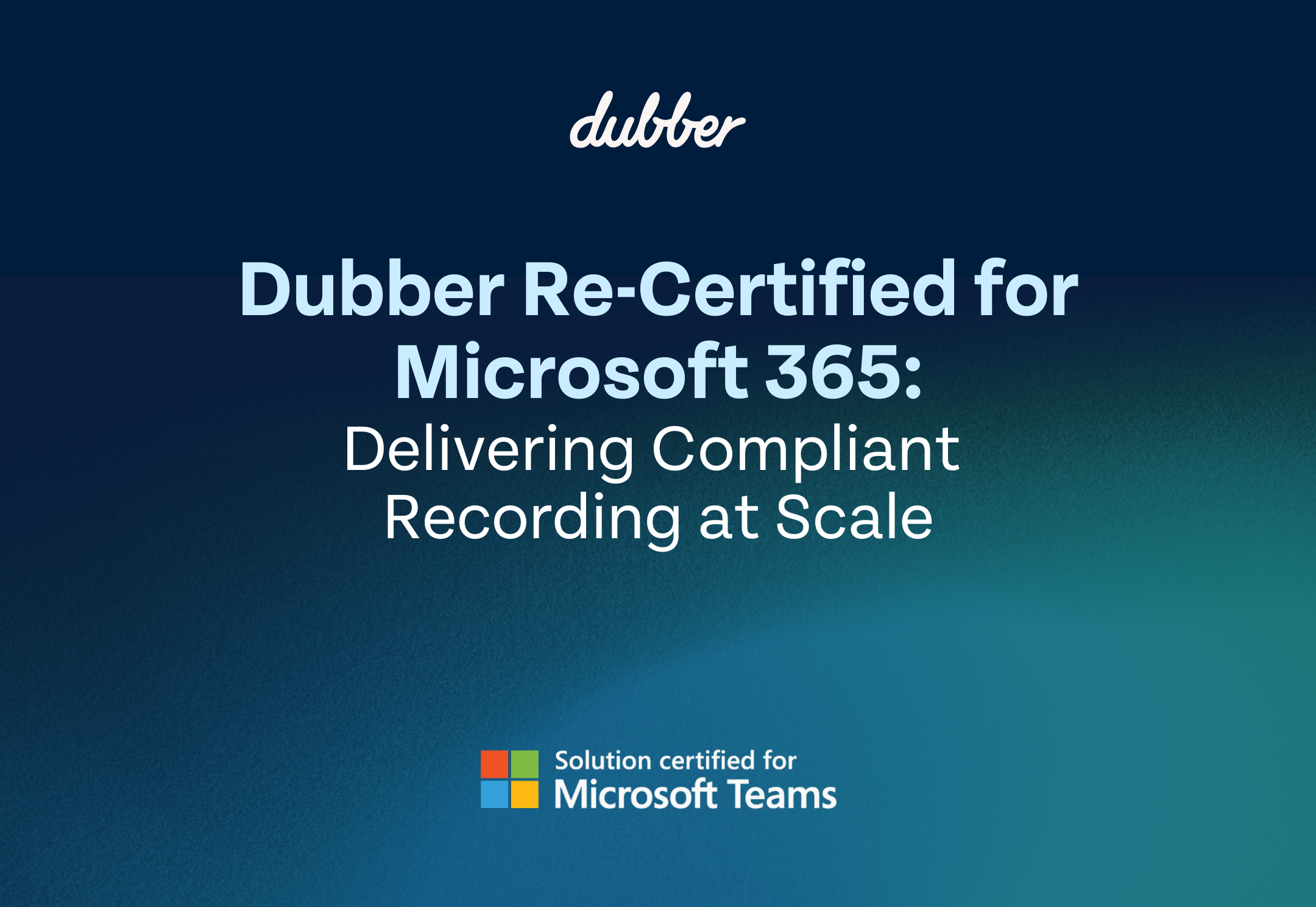

The Year of Ending Not Knowing
2020 was certainly different. And 2021 will be different again.
While 2021 will see the continuing acceleration of the dominant trends of 2020, it will be a different year again as enterprises and governments shift from a scramble to adapt to a new normal, to reshaping their futures based on new conditions.
Plato was right: necessity is indeed the mother of invention. During the COVID-19 crisis, one area that has seen tremendous growth is digitization, meaning everything from online customer service to remote working to supply-chain reinvention to the use of artificial intelligence (AI) and machine learning to improve operations. Healthcare, too, has changed substantially, with telehealth and biopharma coming into their own. – McKinsey
Here are our views on what these new conditions mean for governments and enterprises in the context of Voice Data as a Service and Unified Call Recording.
1. Endpoints have been dispersed, for good
The overnight shift to remote work meant the scattering of communication endpoints from one centralised location to home offices and makeshift desks all over the world. This opened the door to mobile and Internet Protocol (IP)-based communication becoming the main channel for business conversations.
Enterprise adoption of Unified Communications solutions as the dominant communication tool will accelerate in 2021 – driving the need to answer broader enterprise needs for compliant conversations on these platforms.
“As organisations raced to deploy communications platforms such as Zoom, Microsoft Teams and Cisco Webex, they faced new pressures to ensure that communications across these channels were in compliance with industry regulations. This has shifted the requirement for call recording from being application-specific to the need for Unified Call Recording – due to the need to capture every endpoint.” – James Slaney, COO
2. Compliance optimisation
The pressure to maintain compliance with industry regulations isn’t going anywhere, in fact it accelerated this past year.
Compliance has remained a primary driver for call recording, however, we have seen a new emphasis on utilising the data to understand the customer and ensure employee wellbeing as part of a more proactive approach to compliance and business continuity.
2020 saw voice data emerge as a principal driver of optimising compliance programs to deliver a real-time view and reduce costs and complexity. This too will accelerate in 2021 as business leaders look to seamlessly integrate voice data with big data sets, applications such as Salesforce and more.
“Employers are feeling the distance between themselves and their employees and are keen to know more about the wellbeing of their staff, as well as wanting to be on the front foot when it comes to reducing risk and complying with industry regulations. This has led to organisations looking for ways to rapidly undertake audits – making keyword search and custom alerts more important than ever and relegating old world systems that don’t enable real-time search to the back seat.” – Russell Evans, CRO
3. The paradox of contactless customer experience
Satisfying customers through digital and contactless experiences means getting closer to customers, even while they are further away.
The lack of customer intimacy implicit in digital channels created more demand for voice communications. Leading organisations increased efforts to listen harder and automate customer experience (CX) reporting. Traditional approaches to net promoter scores that delivered CX insights quarterly or annually have begun to be replaced by AI-enriched voice and digital data that provides real-time insights. Analysing customer experience and employee experience identifies the true drivers of engagement and loyalty.
“Ending not knowing what was said, what the customer or employee experience was, or how the organisation is performing from a CX and EX standpoint is more important today than ever. 2021 will see traditional methods -– which present data months after it happened or worse, are based on hearsay – with real-time voice data analytics derived from Unified Call Recording. Enterprises will rapidly shift from time-lapsed CX to continuous CX, and reap significant cost savings as they do it.” – Andy Lark, CMO
4. Closing the business continuity chasm
2020 made the term “unprecedented events” seem like the understatement of the century. Business continuity planning was upended by the coronavirus pandemic. Organisations were forced to reassess their approach to every aspect of their operations and communications: from call centres to supply chains.
Business applications easily managed in data centres and wired to end-points had to be rapidly reassessed as workers dispersed, and legacy call centre approaches rethought. Cloud and network-centric approaches will accelerate in 2021 as enterprises look to reduce costs and fully virtualise approaches to voice interactions.
“We saw a shift in enterprise focus towards building out more UCaaS capability, which drove interest in the potential of voice communications as a valuable source of data. There was a growing desire to understand conversational data and turn it into actionable insights through the use of AI. Businesses began to understand that voice data can be used to improve operational performance, especially with the increase of digital and distanced transactions.” – James Slaney, COO
5. Mobile as the primary communication channel
The rise of mobile communications skyrocketed throughout 2020. Without an office and the accompanying communications systems, employees resorted to using their mobile as their primary communication channel. With the rise of 5G this adoption of mobile devices will only continue to increase.
While some regulators hit pause on compliance mandates for employees working from home, most – including the FCA in the UK – now require compliant call recording of conversations between bankers and customers.
This leaves businesses reevaluating their communications solutions and their compliance requirements. In order to ensure compliant and critical record keeping, businesses need to be able to capture calls directly from the network.
“Where call recording was once confined to the domain of the call centre, enterprises raced to understand how to capture conversations from mobile devices across wireless and IP connections. Unified Call Recording and Voice Data as a Service became a priority as organisations looked to capture calls from anywhere, enrich voice data with AI, and aggregate that data for broader enterprise use.” – Russell Evans, CRO
6. Work changed forever
Vaccine rollouts bring promise of a return to old freedoms, but in the meantime, communication and collaboration is likely to remain virtual. A Gartner survey of company leaders found that 82% plan to allow employees to work remotely at least part of the time after the pandemic, and 47% will allow employees to work from home full-time.
“The move to remote work has continued the shift to the cloud, with businesses moving away from application-specific and infrastructure-based call recording solutions. Organisations are demanding cloud-based and network-based offerings to complement the new way of working, and a landscape of business that looks like it has been permanently altered.” – Andy Lark, CMO
7. AI pixie dust is everywhere
Any tech solution offered in 2020 had AI attached to it in some form. It was also the year in which organisations saw through the hype and started to look to the real power of AI to automate workflows, enrich data and generate insights.
The application of AI to create intelligence and actions from conversational data will accelerate in 2021. At the most basic level we will see improvements in the ability to accurately transcribe voice data. At the same time advances in conversational outcome predictions will provide enterprises with the ability to significantly improve customer and employee experience.
“Anyone will have seen that in recent years vendors have begun sprinkling AI into every conversation, but what remains is the gap between the technology and understanding of where AI fits and how it can benefit businesses. Poorly managed voice data and AI only adds to the ‘info-besity’ many enterprises experience, further limiting their ability to get clarity from large data sets. Voice AI is more than just transcription, and decision-makers need to be sure they are getting the right data and insights to optimise their organisation.” – Russell Evans, CRO
8. The rise of voice data in the cloud
If data is the new oil, 2020 made it clear that voice data is the largest untapped source of rich insights available. Once isolated to individual applications and business functions, 2021 will see voice data break free of silos and discrete endpoints to become unified in the cloud.
We are seeing an increase in demand for data, as businesses are using this information to fuel continuous intelligence that can inform their everyday business decisions and actions. Gut feelings are no longer enough – the growing complexity of the world requires data-driven organisations.
“While Voice Data as a Service across mobile, UC, and SIP connections is a critical differentiator for service providers, the broader opportunity is in unifying that data in the Voice Intelligence Cloud and letting AI enrich it. This enables enterprises to turn compliant call recording into continuous compliance monitoring.” – James Slaney, COO
Here’s to ending not knowing in 2021!

